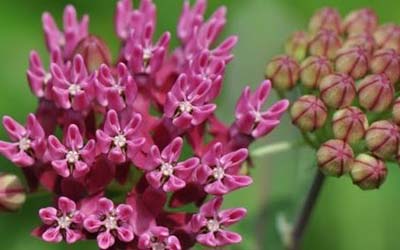
DNR News Digest – Week of April 18, 2022
|
|||||||||||||
News Digest – Week of April 18, 2022
Embrace Earth Day actions every day and help the planet all year long! |
|||||||||||||
|

|
|||||||||||||
News Digest – Week of April 18, 2022
Embrace Earth Day actions every day and help the planet all year long! |
|||||||||||||
|
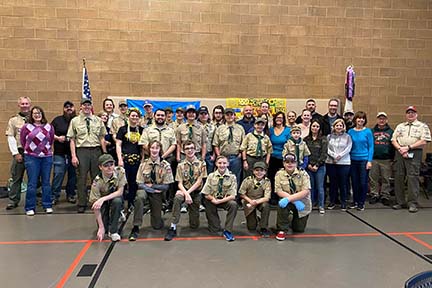
BOY SCOUTS OF AMERICA
Michigan Crossroads Council
A pancake breakfast hosted by Clarkston Troop 189 collected approximately $6,200 to support those displaced by the war in Ukraine.
“They’re putting their lives and their destinies into humanity’s hands,” Tom Snudden, one of the event coordinators, said. “We just wanted to try and be part of that, to be those hands holding them up and supporting them.”
According to the United Nations High Commissioner for Refugees, over 5 million Ukrainians have fled Ukraine since the invasion began in February. Oskar Benson, a Troop 189 Eagle Scout now living abroad in Kraków, Poland, inspired his fellow scouts to action when his family began welcoming refugees into their home.
Taking place at Clarkston United Methodist Church, the breakfast was staffed by twenty scouts working alongside adult volunteers. The youth cooked and served more than 750 pancakes over the course of the meal.
“I volunteered to help the Ukrainian people and be a part of something larger than just our community, to be a step in the right direction,” Life Scout James LaZar, 17, said.
An estimated 250 people attended the breakfast, according to the troop. However, the youth working the welcome table admitted that they lost count after a while. While the breakfast only cost $10 to attend, many patrons chose to donate much more. One benefactor even pledged $500 to cover the food costs. Snudden said that other donations from those who could not attend in-person are still trickling in.
The proceeds from the event will be earmarked and divided between three nonprofits presently supporting Ukrainian refugees: the Ukrainian National Scouting Organization, the United Methodist Committee on Relief, and the Church of Jesus Christ of Latter-day Saints in Poland.
“I hope that the younger scouts learned how we can go above and beyond when we work together to achieve a goal,” LaZar said.
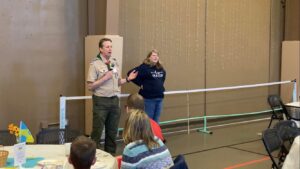
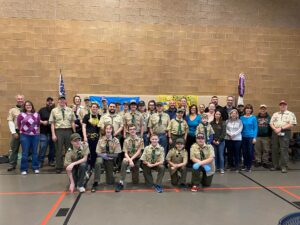
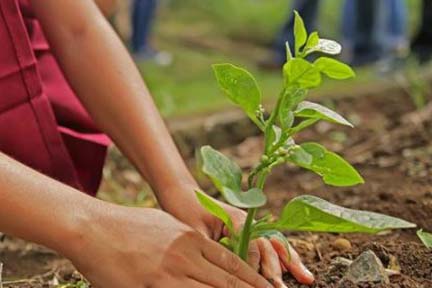
Oakland County will plant five trees donated by The Detroit Zoo in Mack-Rowe Park in Royal Oak Township on Earth Day. The tree planting is part of the OAKSTEM tree planting grant program initiated by Oakland County Executive Dave Coulter’s administration and the Oakland County Board of Commissioners which seeks to improve the environment by supporting storm water management planting trees throughout the George W. Kuhn Drainage District. Royal Oak Township is among 14 communities in the district, all of which have encountered significant flooding during heavy rains in recent years. Oakland County Water Resources Commissioner Jim Nash donated the $10,000 matching funds to Royal Oak Township from his 501(c)(3), Pure Oakland Water.
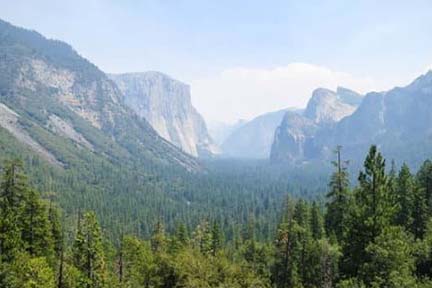
FOR IMMEDIATE RELEASE
April 19, 2022
Contact: [email protected]
State of Michigan and National Park Service Announce Innovation Partnership to Promote Accessibility to National Parks
Partnership aims to improve safety, sustainability, and equitable access at national parks through innovative mobility technologies deployed in Michigan’s five national parks
LANSING, Mich. – Key members of the Whitmer Administration joined National Park Service Director Chuck Sams today to tour the Ford Piquette Avenue Plant in Detroit and announce a first-of-its-kind partnership between the State of Michigan and the National Park Service (NPS) to collaborate on implementing safe, innovative technology to increase accessibility and equity in recreational and park settings. Through this partnership, the five national parks located in Michigan will provide an environment to pilot these emerging mobility technologies that will help make national parks across the country safer, more equitable and accessible to residents and visitors alike.
The partnership is part of a cross-departmental collaboration within the state of Michigan – including the Michigan Outdoor Recreation Industry Office, part of the Department of Natural Resources (DNR), the Department of Transportation (MDOT), the Department of Labor and Economic Development (LEO), and the Office of Future Mobility and Electrification – announced as part of Director Sams’ visit to Detroit to celebrate NPS efforts to spark new ways to make national parks safer and more accessible as part of National Park Week’s “sPark Innovation” day.
“Michigan’s national parks, lakeshores, and scenic trails are a cornerstone of our world-class travel offerings, support countless local economies, and are foundational to who we are as Michiganders. I am excited to collaborate with the National Park Service to ensure these natural treasures remain safe, open, and free for generations to come,” said Governor Whitmer. “As we see more people make the switch to electric vehicles, our partnership will support the promotion and deployment of charging stations and other innovative mobility solutions at our national parks to grow our economy and make our public lands more accessible. At the state level, we will continue investing in our land and water with the recently enacted bipartisan Building Michigan Together Plan, which includes the largest investments in water and parks in Michigan history.”
“From the Model T to the SUV, the great American road trip to visit national parks has been a treasured tradition, providing billions of people with easy, affordable and memorable access to our country’s landmarks. Today we honor the storied history of transportation innovation that made America’s grandest treasures accessible to the world while looking to the future with our new partnership,” said National Park Service Director Chuck Sams. “The partnership we celebrate today advances the National Park Service’s commitment to leveraging emerging technologies for cleaner and more sustainable transportation options that can also reduce congestion and improve experiences for park visitors. These efforts are bolstered by recent landmark legislation, including the Great American Outdoors Act and the Bipartisan Infrastructure Bill, that encourages collaborative efforts to make infrastructure improvements in national parks.”
The State of Michigan and NPS have agreed to the following initiatives:
Michigan is home to five national parks; Pictured Rocks National Lakeshore, Isle Royale National Park, Keweenaw National Historical Park, Sleeping Bear Dunes National Lakeshore, and River Raisin National Battlefield Park. In 2020, 3.2 million park visitors spent an estimated $267 million in local communities supporting 3,770 jobs and contributing $380 million to Michigan’s economy while visiting National Park Service lands in Michigan.
“Michigan put the world on wheels and transformed how people live, work and recreate right here in Detroit and today, we are excited to build on that legacy to once again be at the forefront of creating a more equitable, accessible and sustainable mobility future,” said Trevor Pawl, Chief Mobility Officer with the Office of Future Mobility and Electrification. “We are proud to bring together this first-of-its-kind partnership with the National Park Service to help drive innovation, travel and strong mobility future for Michigan’s residents and visitors alike.”
“At MDOT, we are about encouraging innovation and partnerships in all we do,” said Paul C. Ajegba, director of the Michigan Department of Transportation. “This initiative capitalizes on both and underscores our commitment to reducing congestion and creating more sustainable mobility for visitors to see all our beautiful state has to offer.”
“We have entered a new era of more sustainable, innovative mobility solutions that represent the greatest economic opportunity Michigan has seen in generations,” said Susan Corbin, director of the Michigan Department of Labor and Economic Opportunity. “Not only is it the future of Michigan’s automobility sector but testing and deploying these revolutionary technologies will help us create high-wage science and engineering jobs while futureproofing our state’s tourism and hospitality sectors.”
“The DNR and Michigan Outdoor Recreation Industry Office are excited to work closely with our state and federal partners to design, test and deploy clean and sustainable transportation solutions that get more people outside and active in our State’s great outdoors,” said Brad Garmon, director of the Michigan Outdoor Recreation Industry Office. “Since Hamilton Carhartt began producing overalls in a small Detroit loft in 1885, to one of the first pop-up tent patents in Ann Arbor in 1955, to the invention of snowboarding in Muskegon in 1965, Michigan has always been a leading innovator, not only in transportation but in outdoor recreation. It only makes sense that Michigan is the state that will drive the future of sustainable recreation and mobility.”
The Ford Piquette Avenue Plant where today’s event was held is part of the MotorCities National Heritage Area, linking the world’s largest collection of cultural and labor organizations, museums, archives, factories, auto collections and events to preserve the story of how tinkerers became titans and how auto and labor helped build the middle class while transforming manufacturing worldwide. Established by Congress, National Heritage Areas are locally led and managed with financial and technical assistance provided by the National Park Service.
Learn more about how Michigan is leading in transportation mobility and electrification visit www.michiganbusiness.org/
The Memorandum of Understanding can be found here.






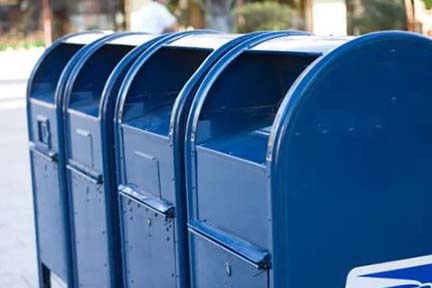
|
|
|||
|